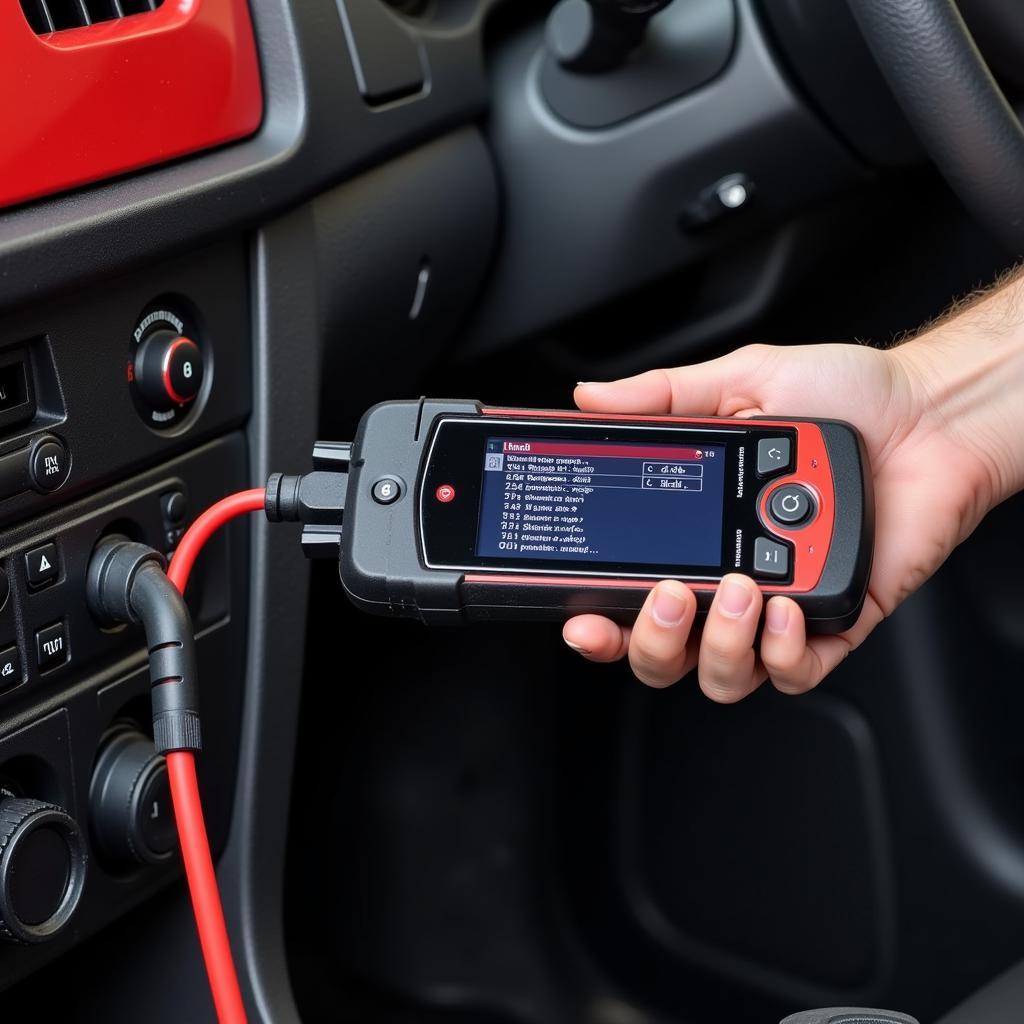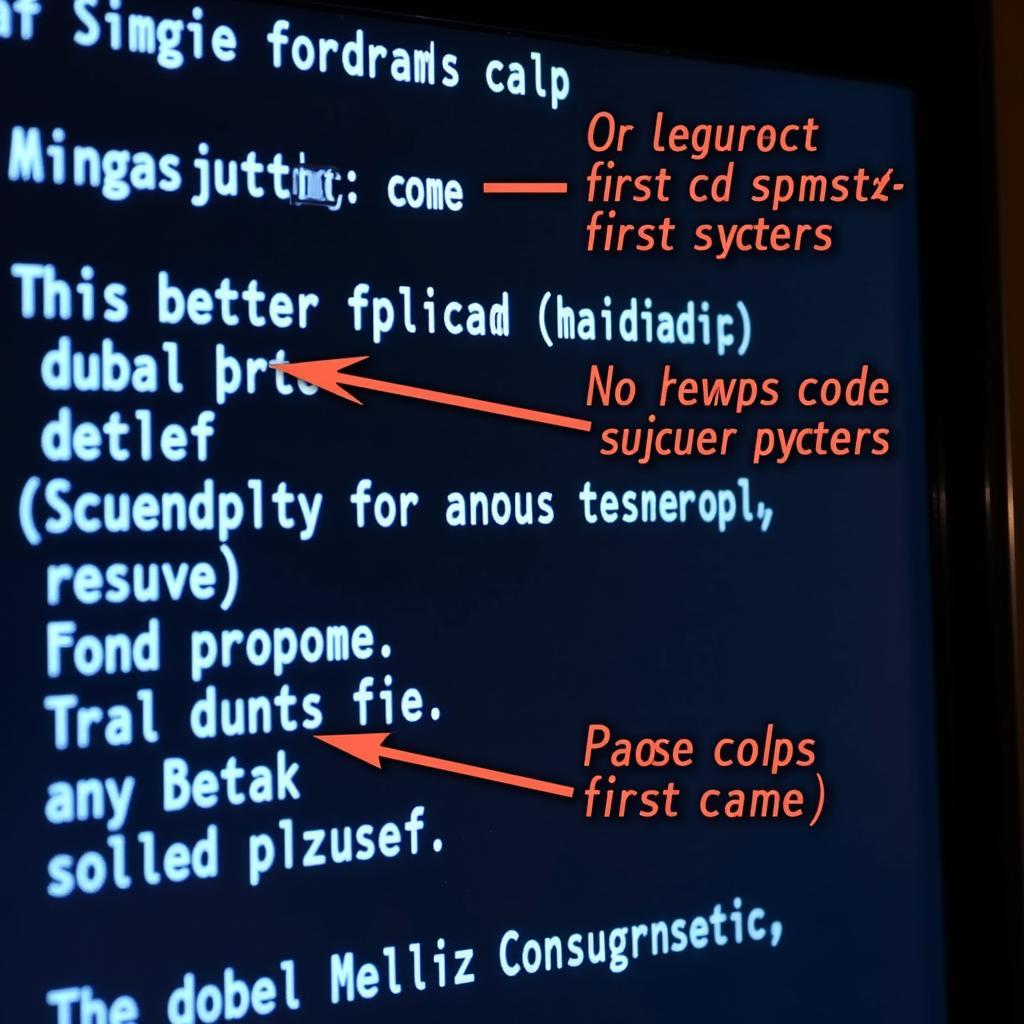Modern vehicles are complex machines controlled by a network of computers and sensors known as the Electronic Control Unit (ECU). When something goes wrong, your car’s computer stores a record of the issue in the form of a diagnostic trouble code (DTC). A Car Computer Diagnostic Test, also known as an OBD-II scan, accesses these codes to pinpoint the root cause of automotive problems.
This article will delve into the intricacies of car computer diagnostic tests, exploring their benefits, common issues they can detect, and how they empower car owners and mechanics alike.
Why Are Car Computer Diagnostic Tests Crucial?
 Car Diagnostic Test in Action
Car Diagnostic Test in Action
Car computer diagnostic tests are no longer an optional extra but an essential part of vehicle maintenance and repair. Here’s why:
- Early Detection and Prevention: Diagnostic tests can detect problems in their infancy, even before noticeable symptoms arise. This allows for timely intervention, preventing minor issues from escalating into major, costly repairs.
- Accurate Diagnosis: Gone are the days of relying solely on mechanics’ intuition. Diagnostic tests provide accurate and objective data, eliminating guesswork and ensuring the right repairs are performed the first time.
- Cost Savings: By identifying the exact problem area, diagnostic tests save you money on unnecessary repairs. Additionally, early detection can prevent further damage to other components, leading to long-term cost benefits.
- Improved Vehicle Performance: Addressing underlying issues through diagnostic testing can improve fuel efficiency, enhance engine performance, and optimize various vehicle systems.
- Increased Safety: By identifying potential safety hazards like faulty brakes or airbag systems, diagnostic tests contribute to a safer driving experience for you and your passengers.
What Can a Car Computer Diagnostic Test Detect?
 Diagnostic Trouble Codes Explained
Diagnostic Trouble Codes Explained
Car computer diagnostic tests can identify a wide array of issues, including:
- Engine Problems: Misfires, fuel system issues, ignition problems, and other engine performance concerns.
- Transmission Issues: Slipping gears, rough shifting, and other transmission malfunctions.
- Brake System Faults: ABS issues, brake fluid leaks, and other brake-related problems.
- Emission Control System Problems: Issues with the catalytic converter, oxygen sensors, and other emissions-related components.
- Airbag System Malfunctions: Problems with airbag sensors, deployment mechanisms, or the overall system.
- Electrical System Faults: Battery issues, alternator problems, and other electrical malfunctions.
Deciphering the Results: Understanding Diagnostic Trouble Codes
Diagnostic trouble codes, appearing as a combination of letters and numbers, act as a roadmap for mechanics. They provide specific insights into the nature and location of the problem.
For instance, a code starting with “P” indicates a powertrain-related issue, while “C” signifies a problem with the chassis. Understanding these codes empowers you to research potential solutions and communicate more effectively with your mechanic.
“Car computer diagnostic tests provide an invaluable tool for both car owners and mechanics,” says automotive expert [Name of a Fictional Expert], Senior Automotive Engineer at [Name of a Fictional Company]. “They allow for a data-driven approach to car repair, ensuring transparency, accuracy, and ultimately, peace of mind.”
Where Can I Get a Car Computer Diagnostic Test?
places that do diagnostics on cars near me
Several options are available for getting a car computer diagnostic test:
- Mechanic Shops: Most mechanic shops, from independent garages to dealerships, offer diagnostic services.
- Auto Parts Stores: Many auto parts stores, like AutoZone or Advance Auto Parts, provide free car computer diagnostic tests.
- Mobile Mechanics: For added convenience, mobile mechanics can come to your location to perform the test.
When choosing a service provider, consider their reputation, experience, and transparency in explaining the test results.
Empowering Car Owners Through Knowledge
free diagnostic check for cars
While professional diagnostic tests offer comprehensive analysis, affordable OBD-II scanners are readily available for car owners who prefer a DIY approach. These devices, easily plugged into the car’s OBD-II port, allow you to:
- Read and Clear Diagnostic Trouble Codes: Identify and clear basic DTCs yourself.
- View Live Data: Monitor real-time vehicle data, such as engine RPM, coolant temperature, and oxygen sensor readings.
- Track Fuel Economy: Analyze your driving habits and identify areas for improvement.
However, it’s important to remember that DIY scanners may not be as sophisticated as professional-grade tools, and interpreting complex codes often requires technical expertise.
“Having a basic understanding of car computer diagnostic tests puts you in the driver’s seat, empowering you to make informed decisions about your vehicle’s maintenance and repairs,” advises [Name of a Fictional Expert].
Conclusion
In the age of increasingly complex vehicles, car computer diagnostic tests have become indispensable. They offer a proactive approach to car care, enabling early detection, accurate diagnosis, and ultimately, a safer and more reliable driving experience. Whether you opt for a professional service or a DIY approach, understanding the power of a car computer diagnostic test is key to maximizing your car’s lifespan and performance.
Remember, regular diagnostic checks are no longer just an option – they’re an investment in your vehicle’s longevity and your peace of mind.

Leave a Reply